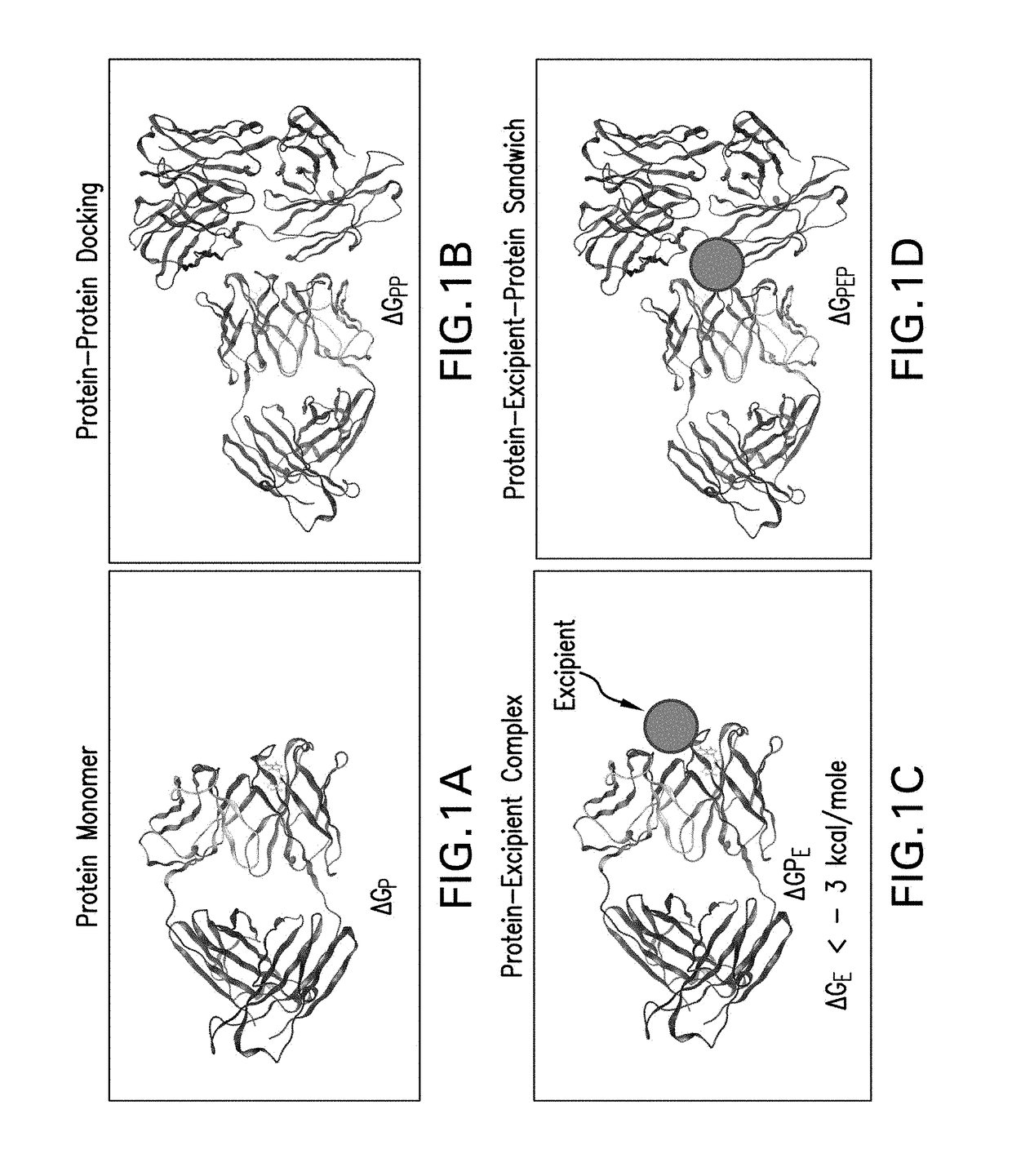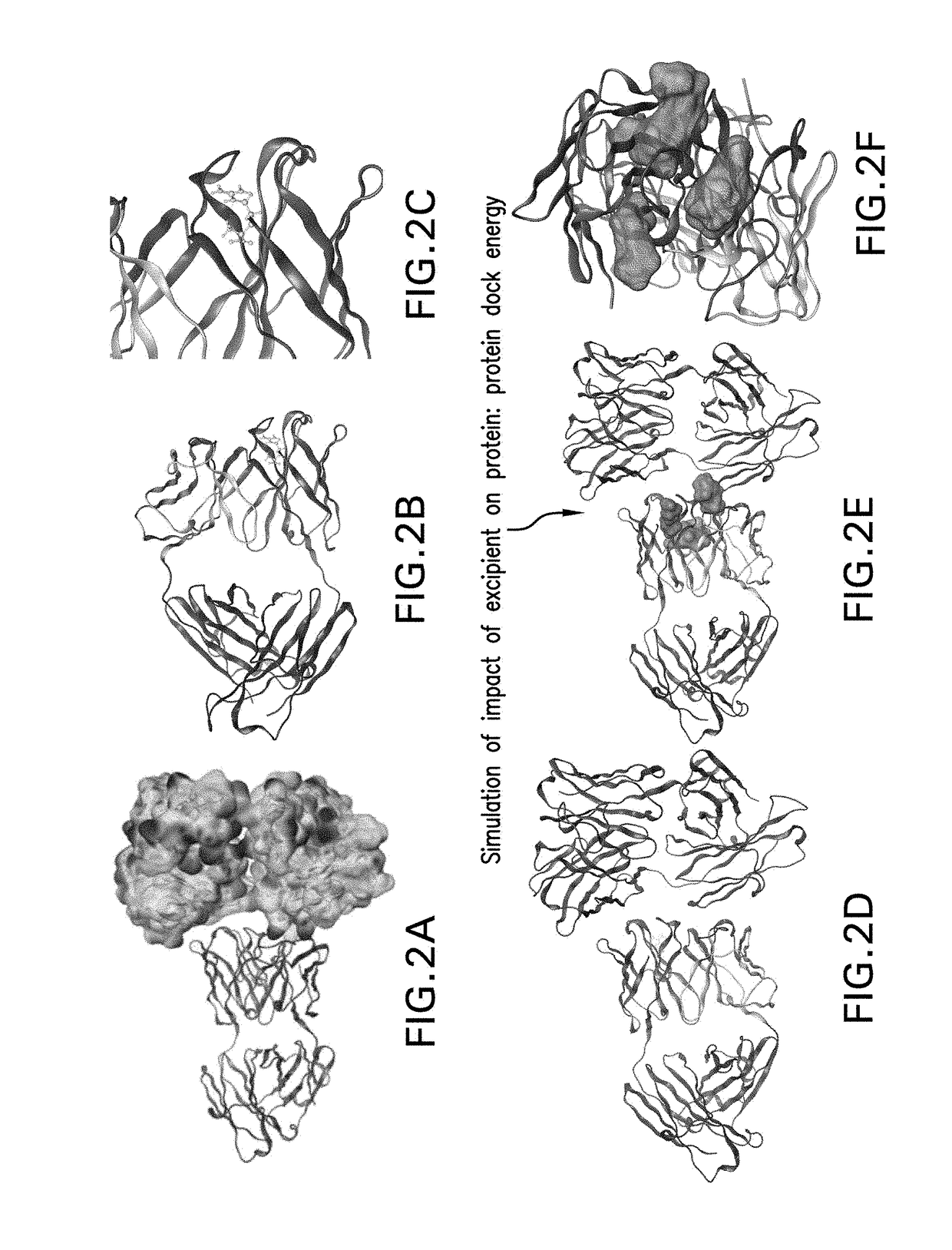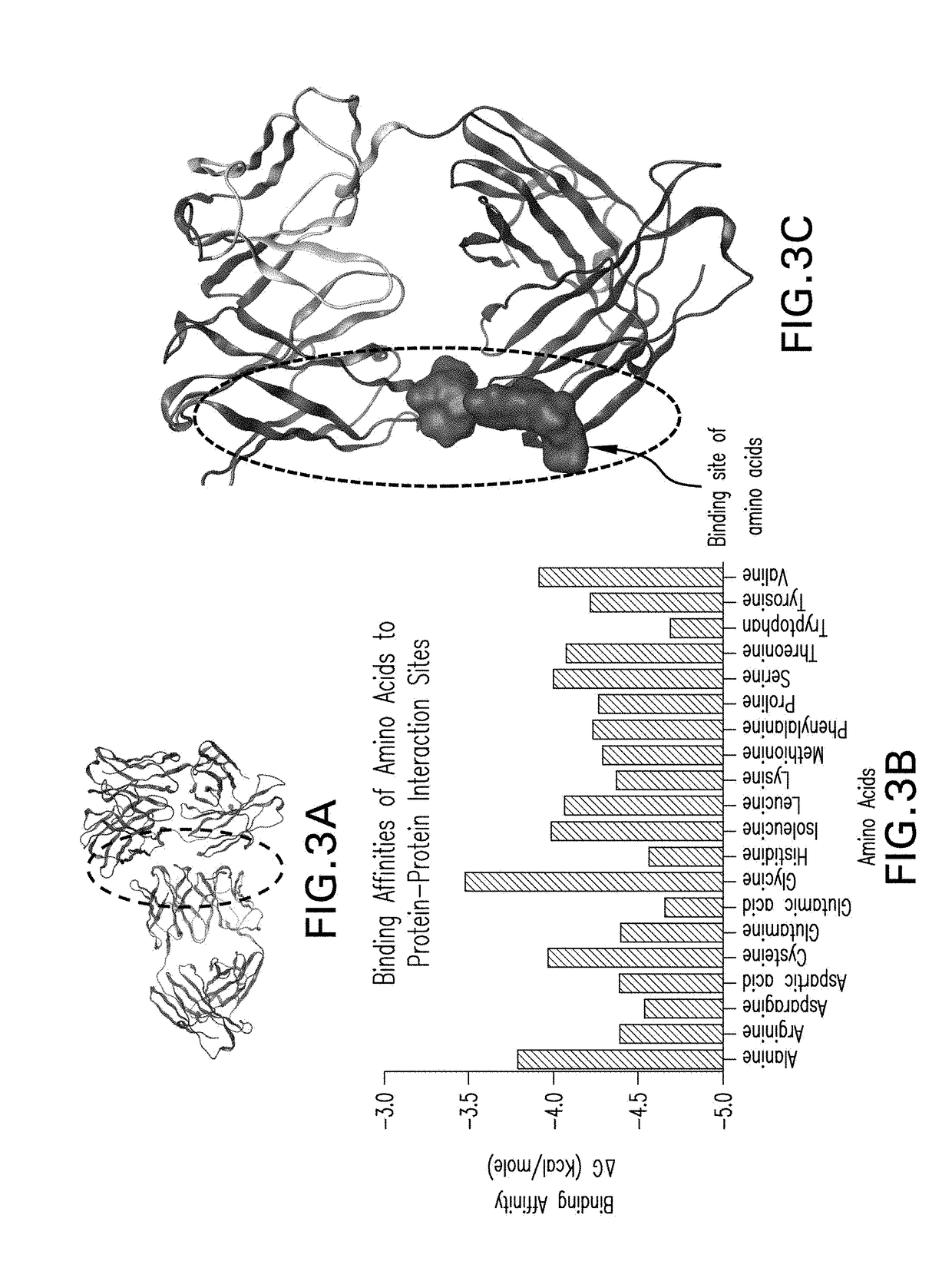In silico process for selecting protein formulation excipients
a protein formulation and excipient technology, applied in the field of in silico process for selecting protein formulation excipients, can solve the problems of reducing efficacy, consuming a significant amount of time and material, and increasing the risk of eliciting an immune response against the therapeutic protein, so as to minimize the structure and eliminate any clashes in the structure
- Summary
- Abstract
- Description
- Claims
- Application Information
AI Technical Summary
Benefits of technology
Problems solved by technology
Method used
Image
Examples
example 1
[0077]This example illustrates the thermodynamic principles of various docking interactions that are evaluated in the screening method of the invention: protein-protein docking, excipient-protein docking and protein-excipient-protein (sandwich) docking.
example 2
[0078]To demonstrate the utility of the in silico screening method of the invention to identify sites of intermolecular protein interactions as well as screen test excipients that may reduce such interactions, four different mAbs were used as model proteins and 20 amino acids were used as test excipients. The CNTO607 mAb was used as a model of a protein for which the 3D crystal structure was publicly available and for which significant aggregation problems had been identified (Bethea et al., supra). The other model proteins were three mAbs whose 3D structures had not been experimentally determined and whose propensity for self-association was unknown. The approach was a direct application of probe-protein docking simulations to determine protein-protein docking sites, protein-excipient docking sites and relative docking scores.
Excipient Structures
[0079]The specific excipients evaluated in this assessment were the 20 standard amino acids (Histidine, Alanine, Isoleucine, Arginine, Leu...
PUM
| Property | Measurement | Unit |
|---|---|---|
| angstrom radius | aaaaa | aaaaa |
| aggregation | aaaaa | aaaaa |
| structure | aaaaa | aaaaa |
Abstract
Description
Claims
Application Information
 Login to View More
Login to View More - R&D
- Intellectual Property
- Life Sciences
- Materials
- Tech Scout
- Unparalleled Data Quality
- Higher Quality Content
- 60% Fewer Hallucinations
Browse by: Latest US Patents, China's latest patents, Technical Efficacy Thesaurus, Application Domain, Technology Topic, Popular Technical Reports.
© 2025 PatSnap. All rights reserved.Legal|Privacy policy|Modern Slavery Act Transparency Statement|Sitemap|About US| Contact US: help@patsnap.com



